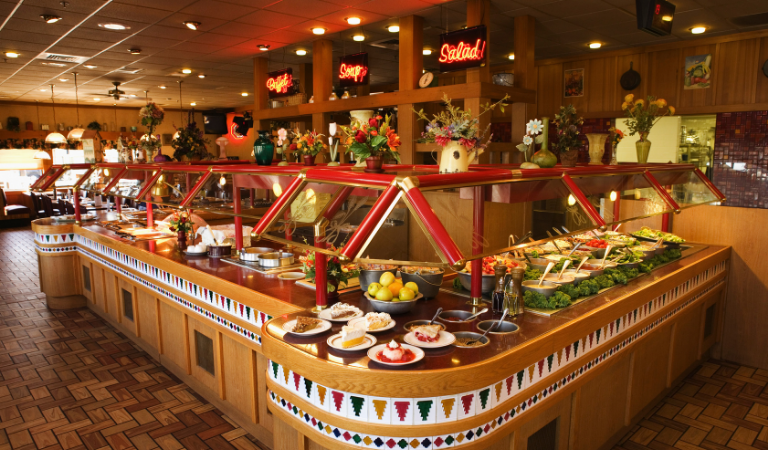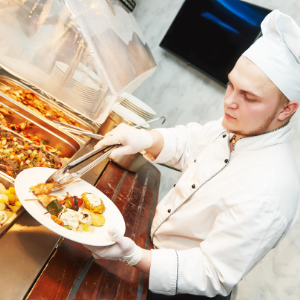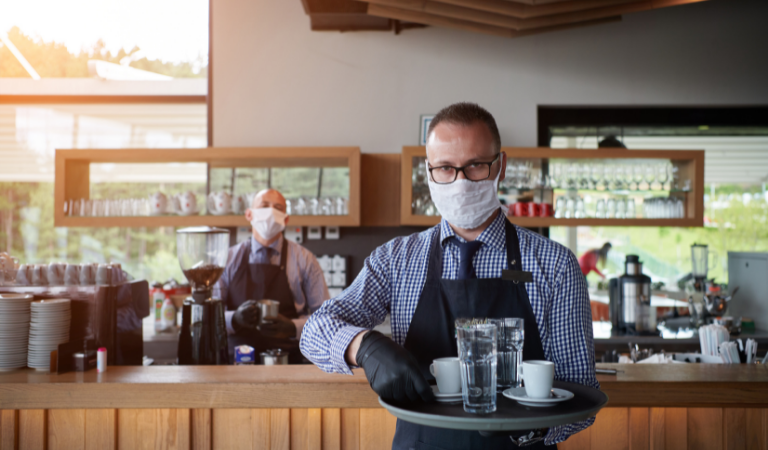After more than a year of quarantining and following a take out and delivery business model, foodservice establishments across the U.S. are reopening their doors for dine-in customers at full capacity. While this brings a sense of normalcy for food industry workers and patrons, what does this mean for buffets?
During the early stages of the coronavirus pandemic, many food industry
experts said that buffets might be gone for good. They believed that
patrons wouldn’t feel comfortable dining at buffets. However, with
COVID-19 cases continuing to decline nationwide, states have begun
lifting restrictions on self-service restaurants, and buffets are
reopening their doors. In this comprehensive article, we break down the
future for self-service operations and how to make buffets safe for
patrons.
How Will Self-Serve Buffets Reopen?
Self-serve buffets, also known as traditional buffets, have been popular for years because of the freedom they provide customers. These establishments allow patrons to walk up to different food stations and serve themselves the amount of meat or dessert they’d like. However, the question many patrons are asking themselves is, how are buffets going to reopen? Most businesses are changing how they work to ensure their customers' safety while still providing them with a large quantity of food at a low price.
Packaging Items Individually
With most individuals understanding how quickly viruses can spread, many buffets are concerned that customers will be hesitant to dine at their business because food is typically left out in the open and exposed to germs.
To ensure their patrons’ safety, many operators are individually packaging items. They are packaging items using containers with clear lids to showcase the dishes and adding food labels to packaging to avoid any confusion about what’s inside. While food is prepackaged, customers still have the luxury of selecting as many individually packaged items as they’d like.
Offering Pre-Portioned Dishes
Rather than having food left out in the open and having customers serve themselves, some traditional buffets are pre-portioning items. While this takes away from guests' experience of serving themselves the amount of salad, sushi, or noodles they’d like, it keeps them safe. They don’t have to handle frequently-touched utensils, and food remains covered at all times. Patrons simply walk to the different stations and grab the pre-portioned dishes they want.
Transitioning To Staff-Service Operations
Some traditional buffets are transforming into staff-service buffets to reduce high-contact surface areas and remove communal serving utensils. Similar to a self-service operation, customers at a staff-service buffet pick their food from a large spread. However, rather than serving themselves, a restaurant employee serves them. Patrons get in a single-file line and walk around the different stations, informing servers what foods they want and how much they’d like.
While transitioning their business to a staff-service operation may cost more due to the cost of extra labor, many business owners believe that it will be well worth it. This new business model provides them with a way to still provide customers with a whole buffet experience while enhancing their safety.
Continuing To Operate The Same Way
Some self-service businesses will continue to operate the same way as they did before: allow patrons to grab a plate, fill it up with whatever they'd like, and enjoy it at their table. Restaurateurs feel comfortable doing this because of the decrease in COVID-19 cases and the increase in vaccination rates. They also believe that everyone will be more cautious after experiencing a global pandemic, making buffets safer than ever.
How To Make Buffets Safe For Everyone
Before the pandemic, buffets had the reputation of being unsanitary because food typically isn't covered, and the number of high-contact surface areas throughout the establishment. To make self-service and staff-service buffets safe for everyone, establishments should consider implementing the following regulations and safety measures.
Change To A Staff-Service Operation
 While some operations have already transitioned into
staff-service operations, more businesses should consider following
their lead. Having your staff serve guests minimizes the number of
people making contact with food and keeps the service organized.
Customers are required to get in a single-file line at each station to
inform the server what they’d like to eat, helping speed up buffet
lines, and prevent buffet tables from looking like a mess.
While some operations have already transitioned into
staff-service operations, more businesses should consider following
their lead. Having your staff serve guests minimizes the number of
people making contact with food and keeps the service organized.
Customers are required to get in a single-file line at each station to
inform the server what they’d like to eat, helping speed up buffet
lines, and prevent buffet tables from looking like a mess.
Place Hand Sanitizer Dispensers At Food Stations
Individuals are concerned about hand hygiene more than ever and want to sanitize their hands before handling food or frequently-touched utensils. Placing hand sanitizer stands at food stations will provide them with a simple way to clean their hands.
The dispensers also provide those customers that may be a little hesitant to dine out with a sense of security. It proves to them that your business is taking extra precautions to keep customers and employees safe.
Install Additional Sneeze Guards
Sneeze guards have been a staple at buffets for many years. The majority of self-service establishments have sneeze guards at food stations to create a barrier between patrons and dishes. They protect the food from respiratory droplets which are released when an individual coughs, sneezes, and speaks. However, many restaurants are installing additional sneeze guards at their buffets to increase their safety regulations. They are placing them at pay stations or hostess areas to protect employees and customers.
Require Reservations
Traditional buffets can feel crowded because customers are constantly walking from their tables to food stations. To help the flow of lines and limit the number of individuals inside your business, consider requiring guests to call ahead or make reservations to dine-in. Creating an occupancy restriction at your buffet will allow you to space out diners to ensure everyone feels comfortable. It also prevents numerous individuals from congregating at food stations or in the waiting area.
Encourage Staff Members To Wear Masks
Although COVID-19 numbers across the country continue to drop,
encouraging staff members to wear masks will make many of your customers
feel secure. It reassures customers that their meals are free of
contaminants since face masks help prevent respiratory droplets from
spreading. Face masks also help keep your employees protected, as they
are assisting or serving numerous customers each day.
The Future Is Now
The coronavirus pandemic has changed self-service buffets forever. As buffets continue to reopen nationwide, you’ll notice that each establishment will operate differently. Some will transition to a staff-service establishment while others will continue to allow guests to serve themselves. However, one common theme you will notice is that most buffets will ensure their employees are following safe food handling and proper sanitation practices. They want to continue to provide guests with all the food they can enjoy while guaranteeing they feel safe and comfortable dining in their buffet.









